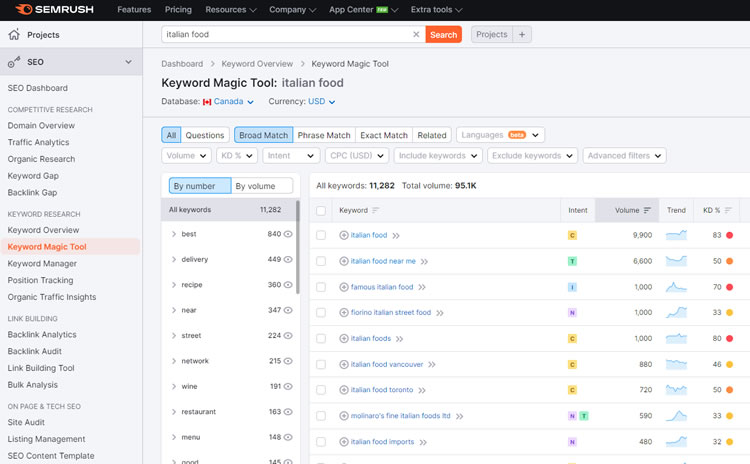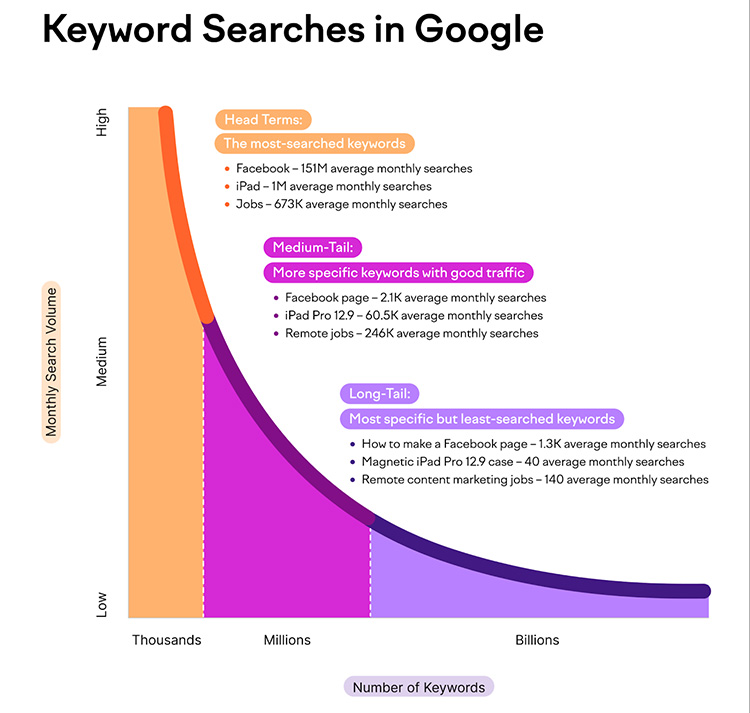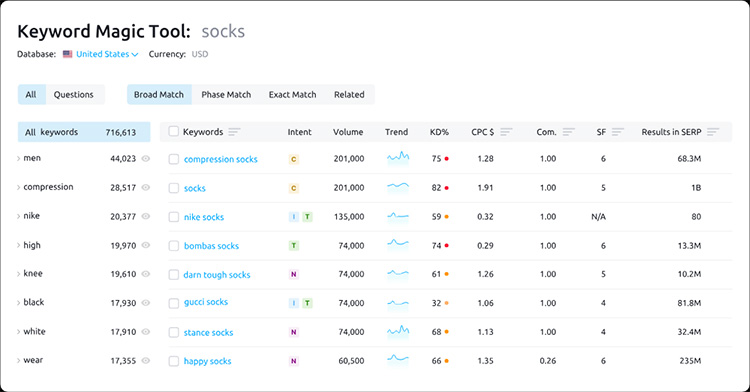How To Rank on the First Page of Google: The Ultimate 2024 Guide
![]() by Fabio Peters
by Fabio Peters

In the vast digital landscape of the internet, where billions of web pages compete for attention, securing a coveted spot on the first page of Google search results is like claiming a prime piece of real estate in the bustling heart of a thriving metropolis. It’s the place where visibility soars, organic traffic flows, and the potential for success knows no bounds.
Whether you’re a seasoned SEO pro or just dipping your toes into the world of online visibility, this blog will be your compass, guiding you through the turbulent waters of SEO strategies, content optimization, and the latest industry trends. We will demystify the ranking algorithms, decode the strategies of SEO experts, and share practical insights and tips that will propel your website to the top echelons of search engine results.
How to rank on the first page of Google?
In the following article, we will cover the SEO ranking factors required to rank on the first page of Google in 2024.
Getting on the first page of Google in 2024 is getting increasingly more difficult. Algorithm changes happen regularly. Once you think you’ve figured out Google’s secrets, they change their SEO ranking factors once again. However, even though a lot has changed, a lot of basics in SEO have also stayed the same.
By now, many people know that to generate traffic to your website, you need to write a blog that ranks on the first page of Google. You do this by creating articles that have long-tail keywords and phrases.
Target Realistic Keywords
The foundation of any successful SEO strategy lies in targeting the right keywords. While it’s tempting to go for high-traffic keywords, it’s crucial to be realistic and strategic.
Opt for keywords that align with your content and are relevant to your audience. Tools like Google Keyword Planner and SEMrush can assist you in identifying keywords with a healthy balance of search volume and competition.
Evaluate the Keyword Intent

Understanding the intent behind a user’s search query is paramount. Google values content that precisely matches user intent.
For instance, if someone searches for “web design tips,” they may be looking for informative content, whereas “web design services near me” indicates a potential customer ready to make a purchase.
Tailor your content to align with the searcher’s intent, whether it’s informational, navigational, or transactional.
Write Long-Form Content Your Keyword
Long-form content has proven to perform well in search engine rankings. Google perceives lengthy, informative articles as valuable resources, boosting their visibility.
When crafting your content, delve deep into the topic, covering various aspects comprehensively.
Aim for a word count that allows you to explore the subject thoroughly without compromising on quality.
Optimize Your On-Page SEO
On-page SEO is the bedrock of your website’s visibility. Ensure that your title tags, meta descriptions, and headers are optimized for your target keywords.
Create a compelling meta description that entices users to click on your link. Use header tags (H1, H2, H3) to structure your content logically and make it easier for both users and search engines to understand.
Target Long-Tail, Question Keywords

Source: SEMrush
Long-tail keywords and question-based queries are often less competitive and more specific, catering to niche audiences.
Incorporate these into your content strategy to capture users looking for precise information. For instance, instead of targeting “web design,” consider “responsive web design best practices.”
Ensure Content Readability
In the fast-paced digital world, users often skim through content to find what they need quickly.
Break your content into digestible sections, use bullet points, and employ subheadings to make it easy for users to grasp the main points.
This not only enhances the user experience but also signals to search engines that your content is well-structured.
Make Clear Direct Statements
Be clear and concise in your content. Explicit statements not only aid user understanding but also help search engines comprehend the context of your content.
Avoid vague or ambiguous language and ensure your message is direct and to the point.
Incorporate Meaningful Visuals
Enhance your content with visuals that support your message.
Images, infographics, and charts not only make your content more engaging but also contribute to a positive user experience.
Make sure to optimize images for faster loading times, as site speed is a crucial factor in SEO.
Have a User-Friendly Table of Contents
Long-form content can benefit from a table of contents, providing users with a roadmap to navigate through your article.
This not only improves user experience but also helps search engines understand the structure of your content.
Simplify Your Meta Titles
Craft compelling meta titles that accurately reflect the content of your page.
Keep them concise, under 60 characters, and include your target keywords. A well-optimized meta title can significantly impact your click-through rate, influencing your overall ranking.
Build Quality Backlinks

Backlinks remain a powerful ranking factor.
Acquiring high-quality backlinks from reputable websites signals to search engines that your content is trustworthy and valuable.
Build relationships within your industry, guest post on relevant blogs, and create shareable content to naturally attract backlinks.
Analyze Your Search Queries
Explore the queries users use to find your website through tools like Google Search Console.
Analyzing these search queries can uncover valuable insights into user intent and help you refine your content strategy.
Target How-To and Tutorial Keywords using Videos

Google values multimedia content, and videos have become increasingly influential in search rankings.
Create how-to guides and tutorials related to your niche, incorporating target keywords.
Host these videos on platforms like YouTube and embed them into your content for an extra SEO boost.
Target Pages Already Ranking
Identify pages on your website that are already ranking well and optimize them further.
Update the content, refresh keywords, and ensure that these pages provide the best possible user experience.
Do a SERP Analysis

Conduct a thorough analysis of the Search Engine Results Pages (SERPs) for your target keywords.
Understand what your competitors are doing right and where you can differentiate yourself.
This insight will help you tailor your content and strategy to outperform competitors.
Add Schema Markup
Schema markup enhances the rich snippets displayed in search results, providing users with additional information about your content.
Implementing schema markup not only improves the visibility of your content but also increases the chances of attracting clicks.
Check Your Technical SEO
Technical SEO is the backbone of your website’s performance. Regularly audit your site for issues like broken links, duplicate content, and crawl errors.
Optimize your site’s speed, ensure mobile responsiveness, and secure your website with HTTPS. Google prioritizes websites that offer a seamless and secure user experience.
Conclusion
Mastering Google’s front page requires a holistic approach that combines keyword research, content optimization, and technical excellence.
As a web designer, staying abreast of industry trends and continually refining your SEO strategy is key to achieving and maintaining a prominent position in search engine results.
By implementing these strategies, you’ll not only enhance your website’s visibility but also establish yourself as an authoritative and reliable source in your niche.
Keep adapting, experimenting, and optimizing – the journey to the top of Google is an ongoing process that rewards dedication and expertise.
Editorial Process:
The reviews on this site are crafted through diligent research, collecting expert insights, and drawing from genuine, real-world experience. You can learn more about our editorial process here.
It’s worth noting that certain links within this article may be affiliate links. This means that if you choose to purchase a paid plan through these links, we may receive compensation at no extra cost to you. Rest assured, these are products and services that we have personally tested, used, and wholeheartedly endorse. We want to emphasize that our website is not intended to offer financial advice. Your trust and satisfaction are our top priorities.
Table of Contents
- How to rank on the first page of Google?
- Target realistic keywords
- Evaluate the Keyword Intent
- Write Long-Form Content Your Keyword
- Optimize Your On-Page SEO
- Target Long-Tail, Question Keywords
- Ensure Content Readability
- Make Clear Direct Statements
- Incorporate Meaningful Visuals
- Have a User-Friendly Table of Contents
- Simplify Your Meta Titles
- Build Quality Backlinks
- Analyze Your Search Queries
- Target How-To and Tutorial Keywords using Videos
- Target Pages Already Ranking
- Do a SERP Analysis
- Add Schema Markup
- Check Your Technical SEO


